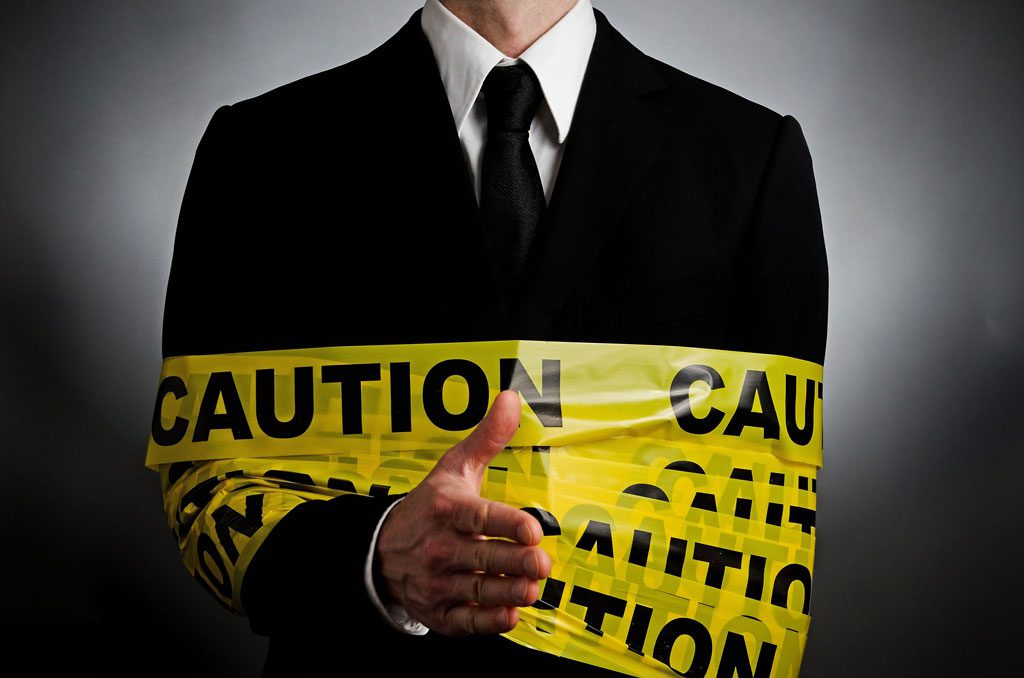
Social media is pervasive, and these platforms play an ever-present role in our lives – and not just our personal, social lives. Workplaces are increasingly affected by issues originating from social media posts.
In October, a woman on her bicycle gave a colorful gesture to the passing presidential convoy. But when she set the photo of this moment as her social media profile picture, she lost her job. More recently, an ESPN host was reprimanded for political posts on her personal social media accounts. Subtle differences exist between what is acceptable to post and what could cause workplace trouble.
For employees, it is important to remember that Americans’ right to free speech does not necessarily extend to all speech. A Workforce Magazine survey in 2016 reported that many Americans believe that social media posts are protected by the First Amendment; however, while free speech is protected, this right does not include what private employers can do with personnel.
Social media posts are not protected by the right to privacy, the magazine states. Even with password-protected accounts and specific security settings, once an employee posts or comments through a social media platform, the information becomes public.
If you’re an employee, Forbes magazine recommends performing an online audit of yourself to discover what your employer could find from your accounts; when in doubt about a post’s content, delete it. Check your company’s employee handbook for a social media policy. However, even with these precautions, Oklahoma is an employment-at-will (or right-to-work) state – as is Virginia, where the gesturing, bike-riding woman lived and worked. Employment-at-will means your employer may fire you at any time for any reason (except in cases of discrimination).
Attorney Charlie Plumb of the McAfee and Taft firm has represented many employers and companies regarding these problems.
“We’re living in a global world, so Oklahoma employers and employees aren’t really any different than those anywhere else in the country,” he says. “These situations take place every day.”
On the employer side, Plumb recommends establishing an enforceable policy but also keeping in mind that even with a clear mandate, these issues aren’t black and white.
“It’s not one-size-fits-all or one-policy-fits-all solution,” Plumb says. “You’re balancing a company’s right to address conduct in the form of social media that injures an employer with an individual’s right to speak out and address issues that might arise in the workplace. You have to look at each situation carefully for particular facts and circumstances and balance those to competing rights.”

A policy also shouldn’t sit dusty on a shelf, only to be mentioned when violated, Plumb says. Education is the best route for employees and employers alike.
“Without intruding into people’s lives, it’s important to make sure employees appreciate that, if they post things, it has a spectacular broadcast and it never goes away,” he says. “If they say something harmful involving their co-workers or the company, it can have serious ramifications. Having a good policy helps, but companies also have to educate your workforce about the existence of that policy and then explain that you’re not trying to be their parent. Companies have to make the policy come alive and explain why it’s in place in the first place.”
Speech that is protected involves harassment or discrimination.
“If, for example, a female employee posted complaints about her male supervisor harassing her, or a minority employee were to complain on a Facebook page that he didn’t receive a promotion based on his race and they were fired for this communication, there is a very good argument that these types of comments are protected speech,” Plumb says. “Employers have to realize that if their visceral reaction is to take disciplinary action for these kinds of comments, then what they are doing is retaliating against someone for actions they’ve taken that are protected by law.”
The National Labor Relations Act also protects employees who work together to use social media in addressing problems in their workplace; it is referred to as “protected concerted activity.” This law, passed in 1935, has ramifications extending to social media 83 years later, even though those who passed the law probably did not anticipate Facebook and Instagram. As technology continues to change rapidly, the world of social media law is in flux.
“Like everything else electronic and technological, it’s moving so fast,” Plumb says. “And with social media you are dealing with its variety, its breadth and its persistence. Also, the change in presidential administrations means that some of the trends on what may have been prohibited under the prior administration concerning actions made on social media could be different in six to 12 months. It’s something that both employees and employers should keep in mind.”
Plumb says that as the use of social media continues to increase, both employees and their employers will become more sophisticated in how they manage these situations. But problems will never vanish entirely.
“Years ago, people weren’t that careful about limiting access to some of their postings in terms of blocking or making accounts password-protected,” he says. “I think people are more aware now and it’s helping because it’s making people remember that these things are public. But just like any other inappropriate behavior in the workplace, electronic versions of that will continue as long as the workplace is populated by people.”























